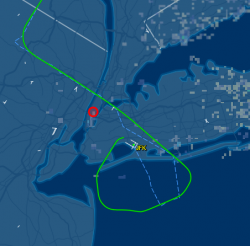- Joined
- Oct 13, 2013
- Posts
- 16,274
Yes I realise that.
Should rephrase that
What are you going to do with all that data?
Should rephrase that
What are you going to do with all that data?
It's an Excel spreadsheet. I haven't filled in a paper one since the navy days.
I’d invite you to come up with me for a fly but considering you have to move the comma several places to the left to get my total time in comparison to yours I don’t want to give you premature heart failure!
Interesting reading your flight log, JB.
Based on the cities you mentioned that you've operated to, does this mean that you never flew a delivery flight of a 767/747 from Boeing in Seattle or an A380 from Airbus in France back to Oz with a new aircraft?
Also, I was doing some reading on the "QF30 incident" and a caption on one photo read,
"Captain John Bartels, centre, and and Captain Werninghaus Bernd, right, brought the aircraft down safely..."
Was that a check flight for one of you that day? I found it interesting that there were two captains on your QF30 and also 2 Captains on the QF32 A380 flight with the emergency landing in SIN, so was wondering whether it occurs more often than I thought, or just pure coincidence that these two flights that had major incidents occur had two Captains on board at the time?
You mentioned Hong Kong flying the 767. I assume those flights were to/from Kai Tak.
My first flight into Kai Tak was an interesting approach between buildings on a QF 707 . Did you have any memorable moments using this approach ?
Is Bernie still on the 747 or has he moved on?

AFF Supporters can remove this and all advertisements
Whilst Kai Tak was especially interesting, the new airport is not without its challenges. The easternmost runway in particular can have very nasty wind shear.
From memory a China Airlines MD-11 came unstuck ...

